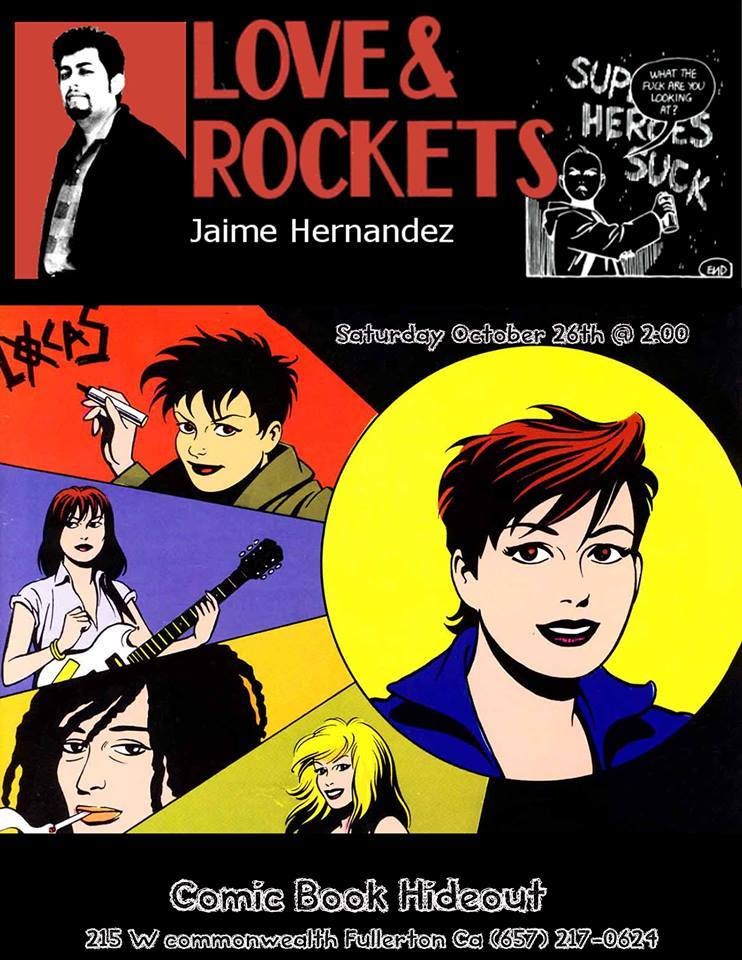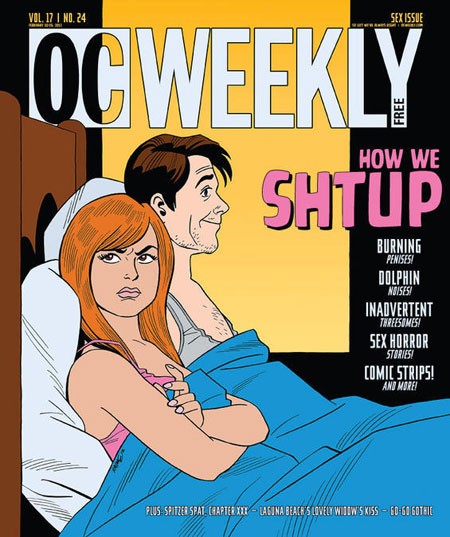
It's been over thirty years since Jaime and Gilbert Hernandez started Love and Rockets, and since then, the mere mention of their names makes comic fans immediately swoon. This Saturday, fans will be have something bigger to swoon about, as artist Jaime Hernandez will be appearing at Fullerton's Comic Book Hideout for a book signing.
Fullerton has hosted the venerable artist before for our Mexican-In-Chief's Awesome Lecture Series a couple years back. So in honor of Hernandez's upcoming appearance, we decided to ask him a couple questions to get you all in the mood to mingle with him this weekend. Don't miss out, find your details all here, and as Gustavo would say, GO GO GO and BUY BUY BUY!
]
OCW: Love and Rockets has long been appreciated by Latinas for the fabulous portrayals and complex, emotional characters with thorough story lines. Do you often get feedback, specifically from Latinos about this representation?
JH: Yes, and it's a good feeling, almost a relief knowing I'm handling it right, not being a woman myself.
OCW: I know that most of your characters are female, but do you see yourself reflected in these characters?
JH: Hard to say, even though it is obvious these characters do come out of my head. Especially in a main character like Maggie who I always believed was a very large chunk of me. Now I'm wondering if I just know her so well that I'm able to remove myself from her and still get into her brain.

OCW: You started doing your comics in black and white, yet later on your comics would appear, from time to time, in color. Do you feel that having your comics colorized adds anything, information-wise, to the story?
JH: Color can add a lot to the drawing. It can take the place of a lot of lines. Our comics started in black and white simply because we couldn't afford color at the time. The '80s black and white boom became an “art form” by accident.
OCW: It's often noted that you and your brothers have kept up with the same format of serializing Love and Rockets over a long period of time. Is it mostly through personal preference, or are there certain advantages in this style of storytelling?
JH: Both. I chose a style early on that I felt could cover any type of story and/or image I wanted to do.
OCW: In regards to your use of luchadoras in your comics, do you find a certain symbolism or ethos within the luchadora world that you would like to embed in your stories?
JH: In the beginning it was just another bit of colorful lower class “junk” culture that I threw into my comics and it sort of took on a life of its own like all the other slices of second class citizenship I put in there.
OCW: You've said before that you started Love and Rockets to illustrate what it's like to be Mexican and punk in Southern California. You eventually grew away from that scene, and so would your characters. At what point did you decide for your characters to eventually move away from the punk rock life?
JH: The same way me and other punks I know did. Some moved on to other things because of their careers or relationships as they got older, some stayed punks with careers and relationships and still others remained punk in their heads even though they stopped wearing the uniform. I try to keep my characters true by observing how people in my life end up. Some of it isn't always very happy but gladly most of it is.
Email: am******@oc******.com Twitter: @aimee_murillo Follow OC Weekly on Twitter and Facebook!
Aimee Murillo is calendar editor and frequently covers film and previously contributed to the OCW’s long-running fashion column, Trendzilla. Don’t ask her what her favorite movie is unless you want to hear her lengthy defense of Showgirls.

